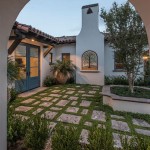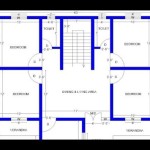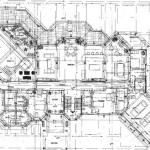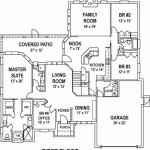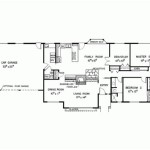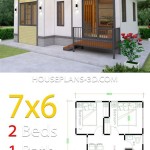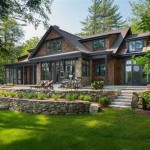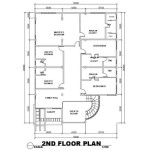7 Bedroom House Plans: A Comprehensive Guide
Designing a home to accommodate a large family or frequent guests requires careful consideration. Seven-bedroom house plans offer a unique solution, providing ample space for living, sleeping, and recreation. This comprehensive guide will explore the key aspects of designing and choosing a seven-bedroom house plan, covering factors such as layout, functionality, cost, and considerations for diverse living arrangements.
The decision to build a seven-bedroom home signifies a specific set of needs and priorities. Perhaps the homeowner requires space for multiple generations to live comfortably under one roof, or they anticipate a steady stream of visitors. Maybe the need arises from wanting dedicated rooms for home offices, hobby spaces, or a live-in caregiver. Whatever the reason, it is essential to approach the planning process strategically to ensure the final design meets these needs effectively and efficiently.
Understanding the Space Requirements
The sheer size of a seven-bedroom house necessitates careful planning of space. It's not simply about fitting in seven bedrooms; it's about creating a cohesive and functional living environment. This includes assessing the minimum acceptable size for each bedroom, considering the necessary square footage for common areas such as living rooms, dining areas, kitchens, and bathrooms, and factoring in circulation space like hallways and stairwells.
Bedroom size is a crucial starting point. While minimum code requirements may dictate a specific square footage, consider the intended use of each bedroom. Are they primarily for sleeping, or will they also function as study areas or playrooms? Will they need to accommodate large furniture such as desks, bookshelves, or seating areas? A master suite will typically require significantly more space than a standard bedroom and may include a large bathroom, walk-in closet, and potentially a sitting area.
Common areas are equally important. The living room should be appropriately sized to accommodate the number of residents and their typical activities. The kitchen needs to be functional and efficient, with ample counter space, storage, and appropriate appliance placement. Dining areas should be sized to accommodate both everyday meals and larger gatherings. The number and size of bathrooms are also critical, especially considering that seven bedrooms likely translate to a large number of occupants. Multiple bathrooms, strategically placed throughout the house, will ensure convenience and prevent congestion.
Beyond individual rooms, consider the flow of the house. Hallways should be wide enough to allow for easy movement, and stairwells should be designed with safety and accessibility in mind. Storage space is another essential consideration often overlooked during the initial planning stages. Ample storage throughout the house, including closets, pantries, and potentially a large storage room or attic, will help maintain organization and prevent clutter.
Exploring Different Layout Styles
The layout of a seven-bedroom house can significantly impact its functionality and livability. Several common layout styles can be adapted to accommodate the specific needs and preferences of the homeowner. Understanding these different styles is crucial for choosing a plan that best suits the lifestyle and requirements of the occupants.
A two-story layout is a common and practical solution for larger homes. It allows for a clear separation of living spaces and sleeping areas, with the bedrooms typically located on the upper level. This layout can be further optimized with a master suite on the main level for added privacy and convenience. The layout can also be designed to incorporate features like a grand foyer, formal dining room, and a large, open-concept kitchen and living area.
A ranch-style layout, while requiring a larger footprint, offers the advantage of single-story living. This can be particularly appealing for families with young children or elderly members who may have mobility issues. However, fitting seven bedrooms into a single-story layout often requires a significant amount of horizontal space, potentially impacting the size of the yard and the overall cost of the project.
A multi-generational layout is specifically designed to accommodate multiple generations living under one roof. This typically involves creating separate living spaces within the house, each with its own bedroom(s), bathroom(s), and potentially a kitchenette or living area. This allows for greater privacy and independence for each family unit while still providing opportunities for shared meals and activities. Such a layout might include a main living area, a smaller apartment-like space connected to the main house, or even a completely separate wing with its own entrance.
Consider the orientation of the house on the lot. Natural light and views can greatly enhance the living experience. Strategically positioning windows and doors can maximize sunlight exposure and minimize energy consumption. Take into account the prevailing winds and weather patterns in the area to optimize the home's energy efficiency and overall comfort.
Cost Considerations and Budgeting
Building a seven-bedroom house is a significant investment. Understanding the various cost factors involved and developing a realistic budget is crucial for a successful project. Costs can vary widely depending on factors such as location, materials, labor, and the complexity of the design.
Construction costs are typically calculated on a per-square-foot basis. This figure can vary significantly depending on the quality of materials, the level of finishes, and the complexity of the architectural design. Luxury finishes, custom cabinetry, and intricate detailing will naturally increase the cost per square foot. Location also plays a significant role, as labor and material costs can vary substantially from one region to another.
Land costs are another major factor. The price of land can vary widely depending on factors such as location, size, and zoning regulations. A larger lot may be required to accommodate a seven-bedroom house, especially if a ranch-style layout is preferred. In some areas, land costs may be comparable to or even exceed the cost of construction.
Design and permitting fees should also be factored into the budget. Architects, engineers, and interior designers typically charge fees based on a percentage of the total construction cost or an hourly rate. Building permits and other regulatory approvals can also add to the overall cost. It's also important to have a contingency fund set aside to cover unexpected expenses that may arise during the construction process.
Financing options should be carefully considered. Securing a mortgage for a large construction project can be challenging, and it's important to shop around for the best interest rates and loan terms. Consider consulting with a financial advisor to explore different financing options and determine the most suitable approach for the individual circumstances.
Consider potential long-term costs such as property taxes, insurance, and utility bills. A larger house will typically result in higher property taxes and insurance premiums. Energy consumption will also be higher, especially during peak heating and cooling seasons. Investing in energy-efficient features, such as high-performance windows, insulation, and appliances, can help mitigate these costs over the long term.
Selecting a reputable and experienced builder is essential. Check references, review past projects, and ensure that the builder is licensed and insured. A qualified builder can help manage costs, ensure quality workmanship, and navigate the complexities of the construction process.
Finally, prioritize needs versus wants. During the budgeting process, identify essential features and prioritize them over non-essential elements. This will help to keep costs under control and ensure that the most important aspects of the house are addressed within the available budget.

Barndominium Life Celebrating The Barndo Lifestyle Floor Plans Barn Homes House Layout

Floor Plans The Ultimate Guide To Understanding Layout And Design Home Decor Ideas

The Ultimate Guide To Modern Farmhouses Houseplans Blog Com

Diffe Types Of Building Plans The Constructor

Dream House Plans Designs Customizable Home Floor

Pin On Thesis
Free House Plans Blueprints Civiconcepts
Free House Plans Blueprints Civiconcepts

House Design Plans 7x7 With 2 Bedrooms Full Samhouseplans

Check Out These 3 Bedroom House Plans Ideal For Modern Families
Related Posts

